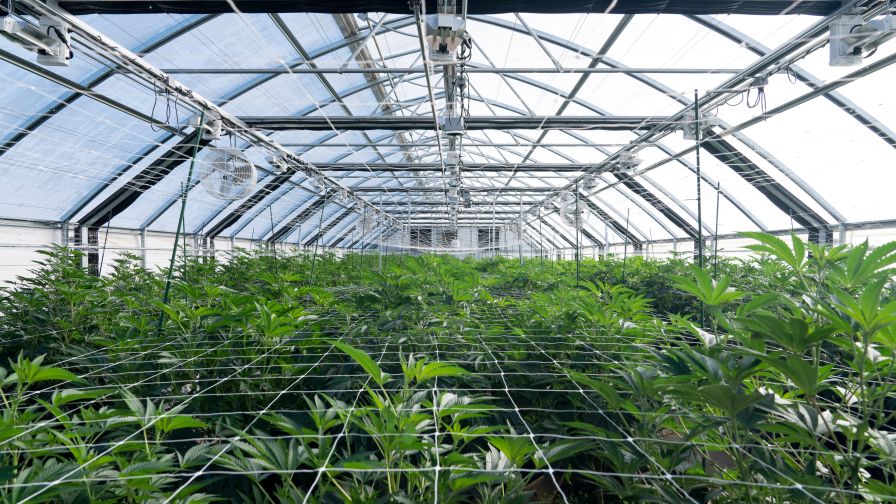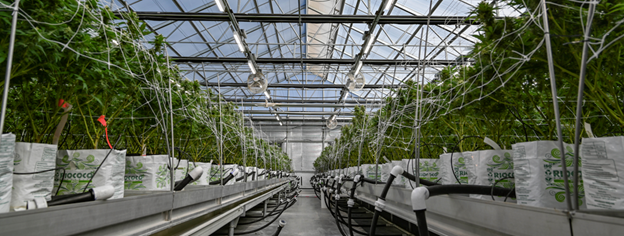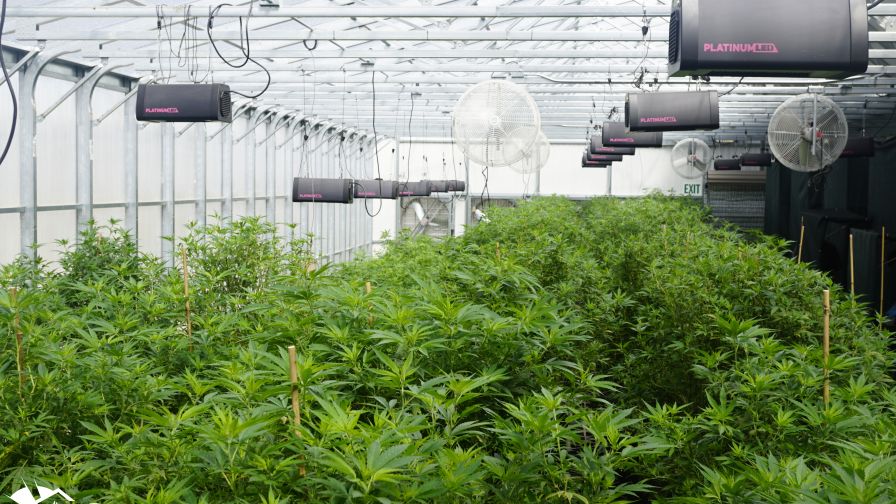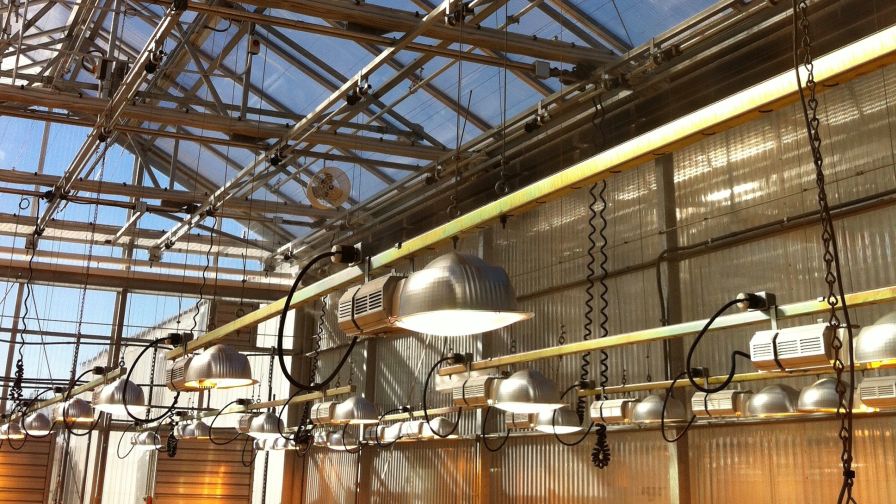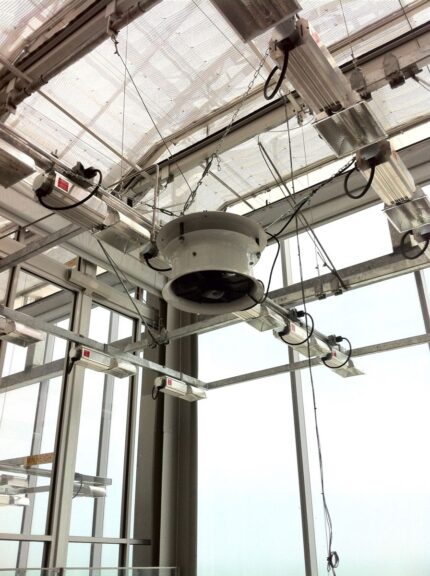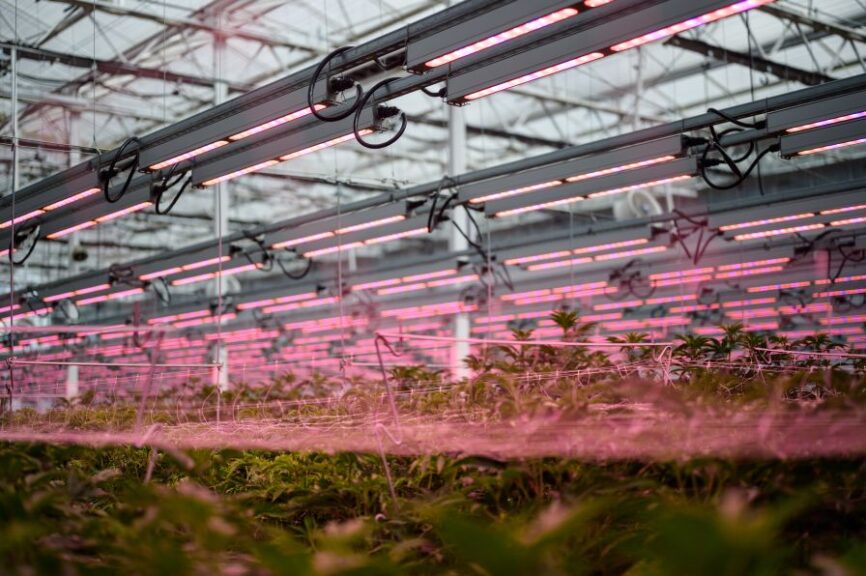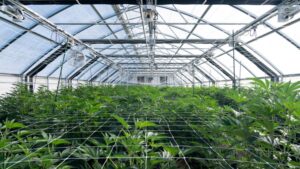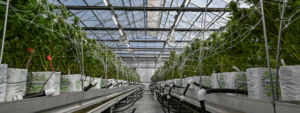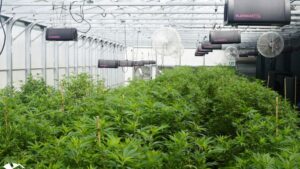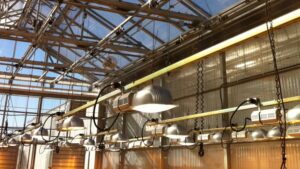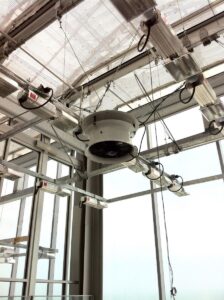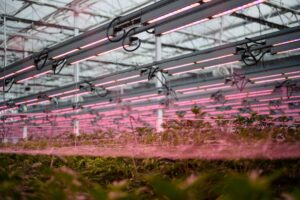Empowering Plants with Environmental Controls Systems
Controls systems for cultivating cannabis in greenhouses prioritize response to outdoor environmental conditions and solar exposure. Growers can use passive and active strategies to manage and supplement sunlight, maintain environmental conditions, and provide water and nutrients to plants. As a greenhouse grower making purchasing and operations decisions, there are often different people offering contradictory advice, many technical terms to learn, and a lot of jargon to navigate.
Resource Innovation Institute (RII) can help you understand which field measurements to take, why they are important, and how to use manufacturer and facility information appropriately. As a non-profit organization, RII brings together producers, utilities, designers, builders, and technology providers to help cultivators successfully adopt efficient techniques and ensure resilient harvests into the future.
RII’s latest peer-reviewed Best Practices Guide on Automation & Controls for Cannabis Producers is being published in July 2021, with input and peer review from more than 40 member organizations of our Technical Advisory Council Working Groups. In this article, RII’s Technical Director and members of the Controls Working Group offer a sneak peek of insights for greenhouse cannabis cultivators.
Due to their unique construction and the variety of greenhouse covering options, the integrity and quality of building envelopes impact the methods available for environmental control and the effectiveness of passive and active strategies. Without climate control measures, greenhouse environments are at the whim of the sun, snow, and the extremes of outdoor temperatures and humidity. Cannabis cultivars are experiencing wide variation in actual environmental conditions across grow rooms. Data collected from cannabis greenhouses by RII’s Technical Advisory Council members shows conditions regularly varying +/- 10°F from target temperatures and +/- 10 percentage points from target relative humidity values.
Controls systems working in concert can accomplish processes to optimize environments for plants. Automated control systems can improve greenhouse cannabis outcomes by consistently achieving and maintaining targets.
Climate controls systems like energy screens, vents, fans, and other heating, cooling, ventilation, air conditioning, and dehumidification (HVACD) equipment can be used to manage environmental conditions for optimal cannabis production. HVACD equipment and energy screens can be controlled independently or integrated through a centralized control system to coordinate the staging of components.
Targets are a crucial starting point for a thoughtful greenhouse controls approach. Good controllers with weather stations can anticipate the need for heating, cooling, shading, and lighting. Most growers are aware that for optimal growth, the key growth factors light, temperature, CO2, and irrigation need to be in balance. It is less commonly known that, next to the photoperiod, these climate factors can also be used to steer the crop between vegetative and generative growth. Steering this throughout the growth cycle will ultimately result in the highest yield. The following cannabis steering table is provided for greenhouse cannabis cultivators courtesy of Martin Boerema and Colin Brice, Signify plant specialists.
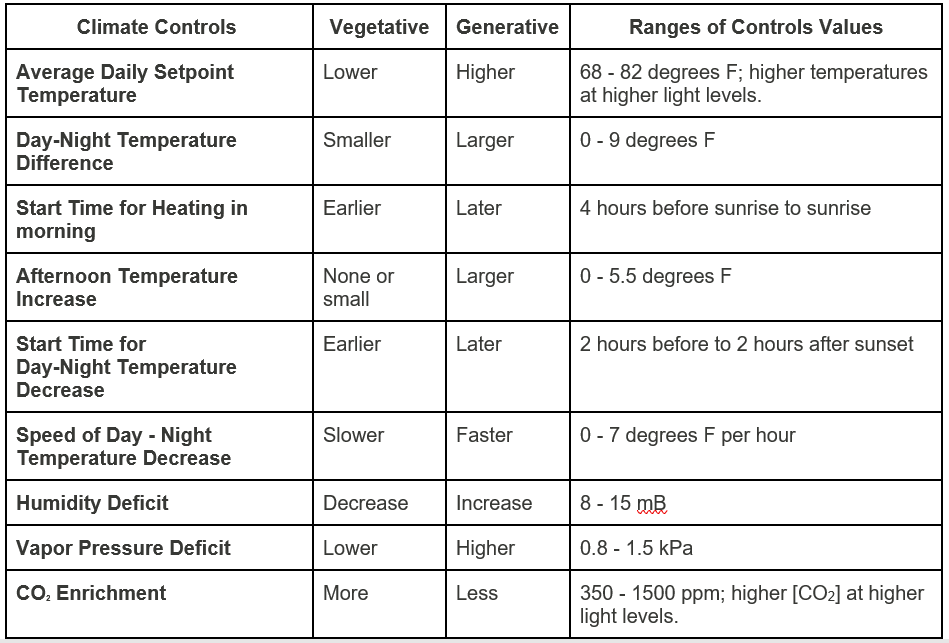 Approaches for supplemental lighting controls should account for solar exposure and daily light integral. Greenhouse growers can employ lighting controls equipment like dimmers and lighting hour control to modulate light levels and consistently achieve DLI and PPFD targets. Different kinds of lighting solutions may influence photomorphogenesis (how light affects how plants express their form and structure). Adjusting red:blue (R:B) ratios and adding far red during different growth stages can optimize cannabis production in greenhouse environments by enabling the use of more energy-efficient spectra (higher red ratios) for portions of the growth cycle.
Approaches for supplemental lighting controls should account for solar exposure and daily light integral. Greenhouse growers can employ lighting controls equipment like dimmers and lighting hour control to modulate light levels and consistently achieve DLI and PPFD targets. Different kinds of lighting solutions may influence photomorphogenesis (how light affects how plants express their form and structure). Adjusting red:blue (R:B) ratios and adding far red during different growth stages can optimize cannabis production in greenhouse environments by enabling the use of more energy-efficient spectra (higher red ratios) for portions of the growth cycle.
Effective water management systems maximize plant production with a perfect fertigation mix while recapturing and reusing water to maximize efficiency. These systems can be managed independently or integrated with HVACD and lighting controls systems.

Growers are encouraged to consider interactive effects and ‘tweak and peek’ to observe, measure, and adjust for the impacts of controls sequences of operation. Three examples below illustrate the interactive effects of equipment and controls systems and how growers can improve decision-making for cannabis greenhouse controls configuration:
- Growing Cannabis under LEDs
- DLI Controls for Cannabis
- VPD Controls
Growing cannabis under LEDs necessitates a new style of growing, especially for growers transitioning from using high-intensity discharge lighting systems like high-pressure sodium (HPS). High-performance narrow-band LED horticultural light fixtures manufactured by Signify can emit up between 3.7 µmol/J (at 100% output) to 4.0 µmol/J (achieved through 50% dimming) versus 1.7 µmol/J from an HPS fixture. The same light intensity can be applied using 40% less energy. Alternatively, LED light fixtures can be used to double light levels relative to HID lamps at a similar or lower energy cost to increase plant growth without increasing costs. LEDs emit 40% less heat per watt overall than HPS lamps and, specifically, 67% less radiant heat which transmits to surrounding surfaces like plant canopies. Therefore, switching to LED from HPS lighting can reduce the radiant heat load to the overall environment and decrease greenhouse cooling requirements, but the avoided radiant heat may especially result in decreased plant temperatures. Increasing room temperatures is often necessary to ensure normalized plant temperatures and optimize the usage of light-derived metabolites.
DLI controls can offer between 20 – 40% in energy savings to optimize lighting systems in greenhouses by reducing system power usage when it is needed. Purdue realized 30% energy savings from using controllers to operate lights off of sunlight intensity compared to using timers. Setting automatic response controls (auto-response on/off control or dimming) requires assessing target DLI, selecting response setpoints optimized for your cultivation facility, and ensuring measurements are taken inside the greenhouse or are converted to account for transmissivity of greenhouse coverings. A good method for setting DLI targets is to choose a maximum desirable PPFD inside the greenhouse and use that as an initial lighting control setpoint. In seasons where realized solar DLIs are below target values, setpoints for accumulated DLI should be set at the target DLI. Conversely, when realized solar DLI’s are expected to exceed targets, DLI setpoints should be set below target values and incorporated with shading system controls to prevent oversaturation of light.
Vapor Pressure Deficit (VPD) is a comprehensive measurement of temperature and humidity. When used as a dynamic target for HVACD controls systems, it ensures an integrated assessment of environmental setpoints and their impacts on plant transpiration, nutrient uptake, and source/sink rates. “Source” refers to the sourcing of plant metabolite contribution through light assimilation and nutrient uptake, whereas “sink” refers to the metabolic allocation rate of these compounds in developing new tissues and secondary metabolites. To ensure accurate VPD calculations, accurate and representative measurement of plant leaf surface temperatures and climate parameters is necessary. Air temperature, leaf temperature, and relative humidity values vary across control zones and throughout plant canopy microclimates, so usage of multiple measurement points and optimal ventilation is needed to create VPD controls representative of the total environment.
Empowering Plants
The Growth by Plant Empowerment philosophy (GPE) advocates for controlling greenhouse environments using dynamic setpoints to support the three plant balances rather than controlling to fixed setpoints for VPD, PPFD, or watering rate. The three plant balances are the energy balance, the water balance, and the assimilates balance—the sugars made for plant growth during photosynthesis. GPE emphasizes that plants are physical objects and biological ones and are subject to the laws of thermodynamics.
Plant evaporation—total transpiration through leaf stomata and evaporation through other micropores—requires energy. Apply energy using light during the photoperiod and warm air during the dark period to maximize this process. This maximizes nutrient, water, and CO2 absorption over the course of a day and improves plant health and flower quality while lending resistance to stress and disease.
GPE emphasizes building and equipment design to create uniform environments, as described in the text ‘Plant Empowerment, The Basic Principles’. It advocates changing environmental control practices incrementally as growers move away from other methods. Some GPE strategies are described below.
Provide as much light as possible while increasing CO2 and humidity to keep the stomata open and increasing temperatures during these high light periods to speed up photosynthesis. Lower the flower load for consistent yields and use vertical fans for air movement.
Employ effective energy screen management to optimize thermodynamics in cannabis greenhouses. For example, use energy screens to limit heat emission from plants toward the cooler greenhouse roof at night so that the leaves stay warm. Thermal screens may need to remain closed to keep plants covered longer in the morning and earlier in the evening.
During the dark period, provide a warm convective flow of air to transfer this energy to leaves. Base irrigation strategies on the total energy flow of the plants rather than just light energy provided. Divide each day into four distinct irrigation periods to achieve volumetric water content and electrical conductivity goals.
Controls Best Practices
- Use control systems to track hours of operation of your light fixtures
- Employ ventilation controls to manage airflow
- Keep operations & maintenance manuals updated to understand which processes are directly controlled and which processes are monitored
- Invest in control systems and integrate as much equipment as possible to improve operation, collect data on environment and data and reduce training time
- Design in redundancy for equipment and maintain a supply of spare parts; a greenhouse is more machine than a building
- Monitor equipment functioning and train staff to recognize sights, sounds, and smells of malfunctioning components; the curse of automation is the complacency it breeds
- Consider transitioning from static setpoints to adopting plant empowerment principles
- Maintain a troubleshooting log including graphs to visualize data and improve diagnostics
- Familiarize yourself with reports showing graphs of environment and equipment usage to learn the “signature” of common equipment failures before alarm conditions arise
- Manage the canopy environment for yield and the under-canopy against disease
- Track energy and water usage and use your control system to dial in your sustainability goals
Keep an eye out for additional tips in Resource Innovation Institute’s next peer-reviewed Best Practices Guide on Facility Design & Construction coming in Q4 2021. Join RII as a member to access market intelligence and engage with our network.





